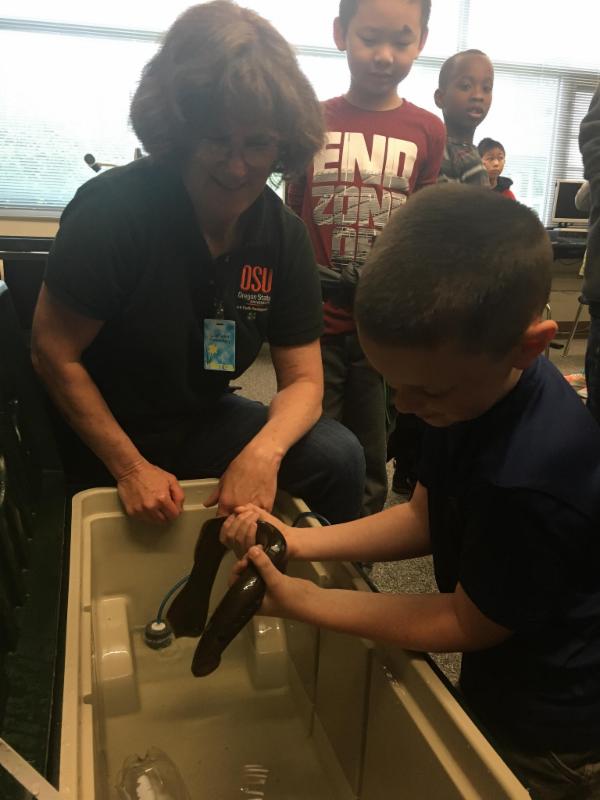When the Pacific Lamprey visit classrooms children jump up and down and scream in anticipation.
And then they see it - the squirmy, eel-like prehistoric fish in the bottom of a cooler - and squeal at its slithering movements. "The lampreys are like rock stars," said Maureen Hosty, who facilitates 4-H programs through the Multnomah County OSU Extension office.
The 4-H program provides local school districts access to a free curriculum
for fourth through eighth graders. The Pacific Lamprey are a fish that has local cultural and ecological significance. The materials are tied with state educational standards and include videos, interactive activities, educational games and engaging presentations.
And the program's grand finale? Hosty brings a live lamprey on loan from the Confederated Tribes of the Umatilla Indian Reservation into the classroom.
Oregon State University and U.S. Fish & Wildlife staff along with the Umatilla tribes are working together to save the 450 million year old lamprey species which are older than dinosaurs. "It's survived so many extinctions," Hosty said.
The oldest living fish today is now a threatened species. Pollutants, chemical spills, mining, channel maintenance, and habitat loss are all contributing to the fish's decline.
That's significant.
Lampreys ar
e an important food source for other fish and act as a buffer to migrating salmon. They are also a central cultural fish to local Native American tribes, which consider the fish a religious and subsistence food source. The fish are also used in

Native American medicines and used as bait among tribes.
Lampreys are not eels despite their appearance. They swim by wriggling back forth in the water. In swift currents, they often suck onto rocks with their mouths to rest then hop to the next rock and cling on orally. Like salmon, lampreys are born in fresh water streams and migrate to the ocean.
As part of the curriculum, students learn about conservation efforts and draw their own advertising campaigns to save the lampreys. A pilot program last year served about 1,000 children, OSU Extension plans to expand their offerings this year, hoping more schools will adopt the free curriculum.
"We want to create awareness and encourage the kids to tell other people," Hosty said. "It works because the kids are so engaged."